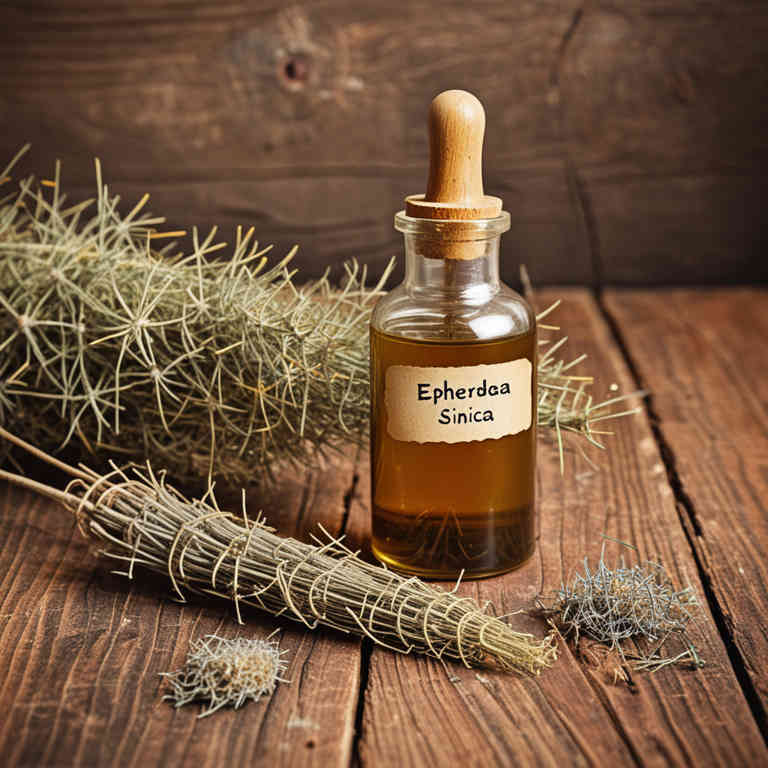Ephedra sinica tincture for medicinal use

Ephedra sinica tincture is a concentrated liquid extract made from the plant Ephedra sinica, which contains alkaloids such as ephedrine and pseudoephedrine.
It has been traditionally used in herbal medicine for its stimulating and expectorant properties. In herbalism, it is often employed to alleviate symptoms of respiratory conditions like asthma and bronchitis by helping to open airways. However, due to its potential for misuse and side effects, it is regulated in many countries.
It is important to use this preparation under the guidance of a qualified herbalist or healthcare professional.
Uses
Ephedra sinica tincture has been used to treat respiratory conditions such as asthma, bronchitis, and nasal congestion for centuries, particularly in traditional Chinese medicine.
Historically, it was valued for its ability to open airways and relieve breathing difficulties, often prepared from the dried stems of the plant. In modern times, it has been studied for its potential bronchodilatory effects, though its use is now highly regulated due to safety concerns. Despite its traditional significance, the tincture is not widely recommended today due to the risk of toxicity and side effects.
Its historical and medicinal legacy remains an important part of herbal pharmacology.
Benefits
Ephedra sinica tincture has health benefits such as enhancing respiratory function, reducing inflammation, and supporting weight loss.
It is traditionally used to alleviate symptoms of asthma and bronchitis by acting as a bronchodilator. The tincture may also help in managing nasal congestion and improving circulation. However, it should be used with caution due to potential side effects and interactions with other medications.
Always consult a healthcare professional before using Ephedra sinica tincture.
Constituents
Ephedra sinica tincture active constituents include ephedrine, pseudoephedrine, and methylephedrine, which are alkaloids known for their stimulant and decongestant properties.
These compounds work by stimulating the central nervous system and dilating blood vessels, which can help relieve nasal congestion and improve respiratory function. Ephedrine is particularly noted for its ability to increase heart rate and blood pressure, making it useful in treating asthma and bronchial issues. However, due to its potential for abuse and side effects, its use is strictly regulated in many countries.
It is important to consult a healthcare professional before using this preparation for any health purpose.
Preparation
To make Ephedra sinica tincture, first gather dried Ephedra sinica plant material, ensuring it is sourced from a reputable supplier and free from contaminants.
Next, place the dried herb in a clean glass jar and cover it completely with high-proof alcohol, such as 80-100 proof vodka or grain alcohol. Let the mixture steep in a dark place for 4 to 6 weeks, shaking the jar occasionally to ensure even extraction. After the steeping period, strain the liquid through a fine mesh strainer or cheesecloth to remove plant matter.
Finally, store the tincture in a dark, airtight bottle away from light and heat, and label it clearly with the date and contents.
Side Effects
Ephedra sinica tincture may lead to a range of adverse health effects due to its active compounds, such as ephedrine and pseudoephedrine, which stimulate the central nervous system and increase heart rate.
It is associated with side effects including increased heart rate, elevated blood pressure, insomnia, and anxiety. Prolonged use can result in more severe complications like heart attacks, strokes, or even death, particularly in individuals with pre-existing cardiovascular conditions. The tincture is also linked to the risk of dependency and withdrawal symptoms when discontinued abruptly.
Due to these risks, it is generally discouraged for use without medical supervision.